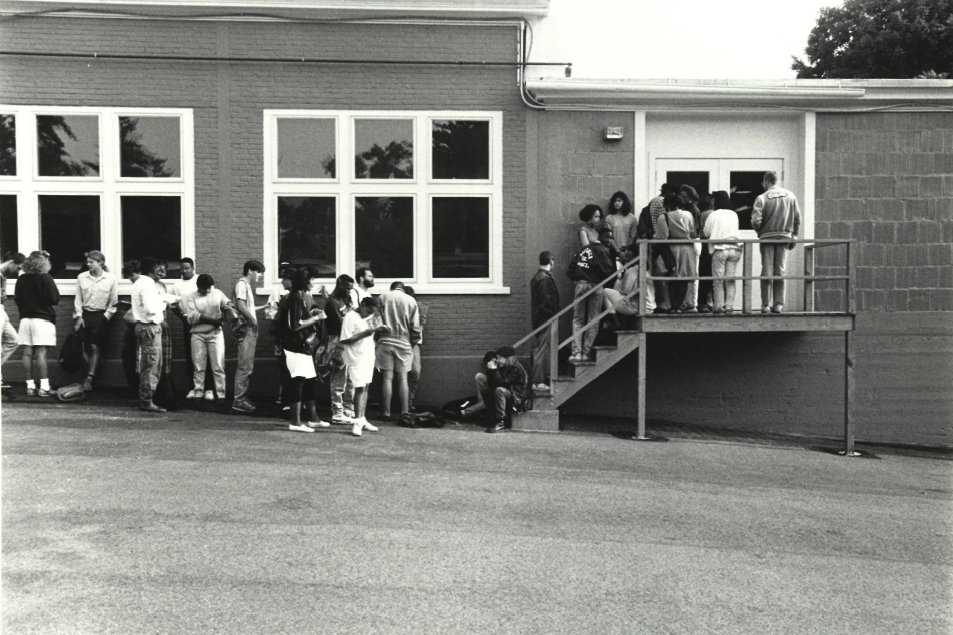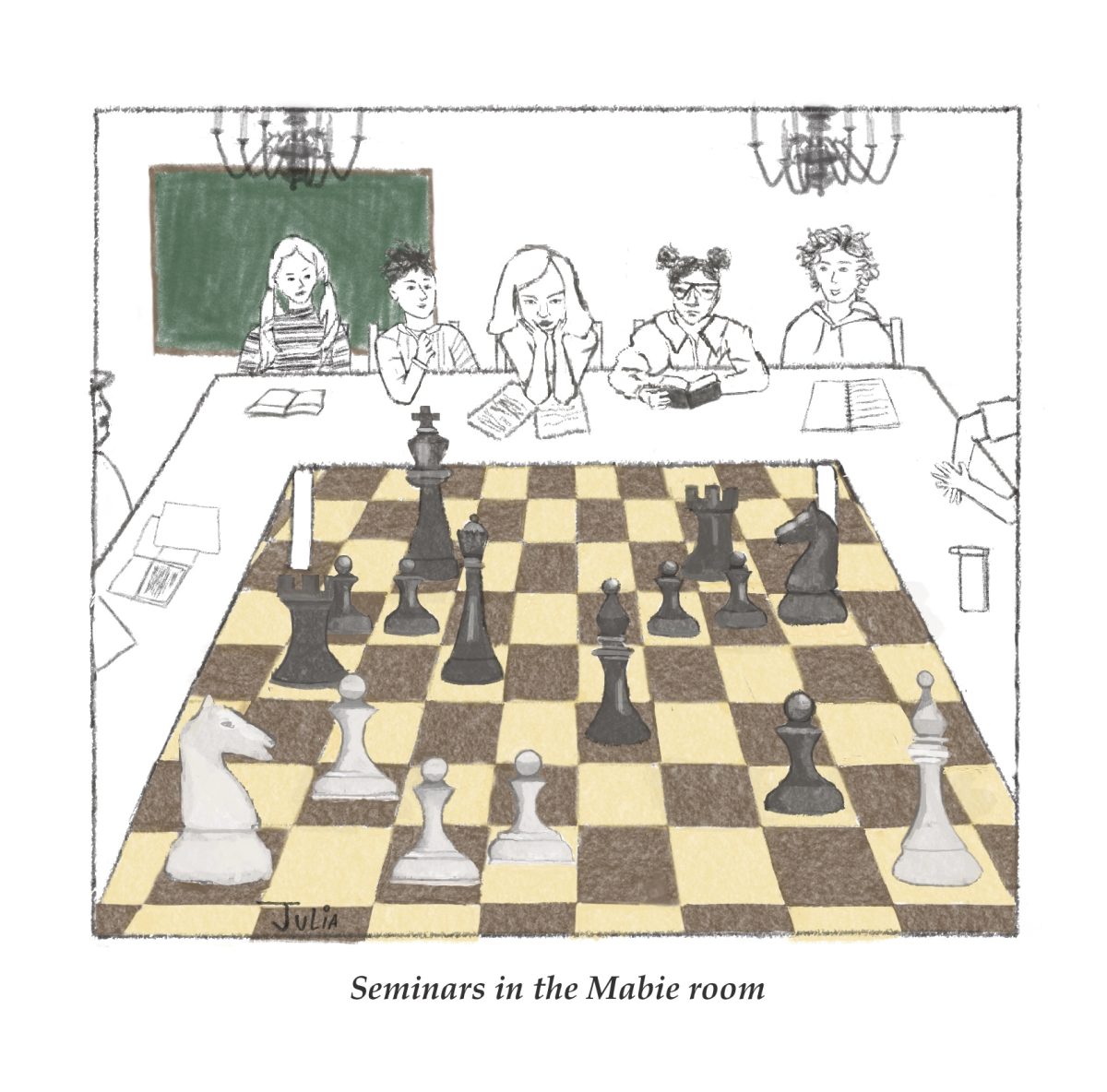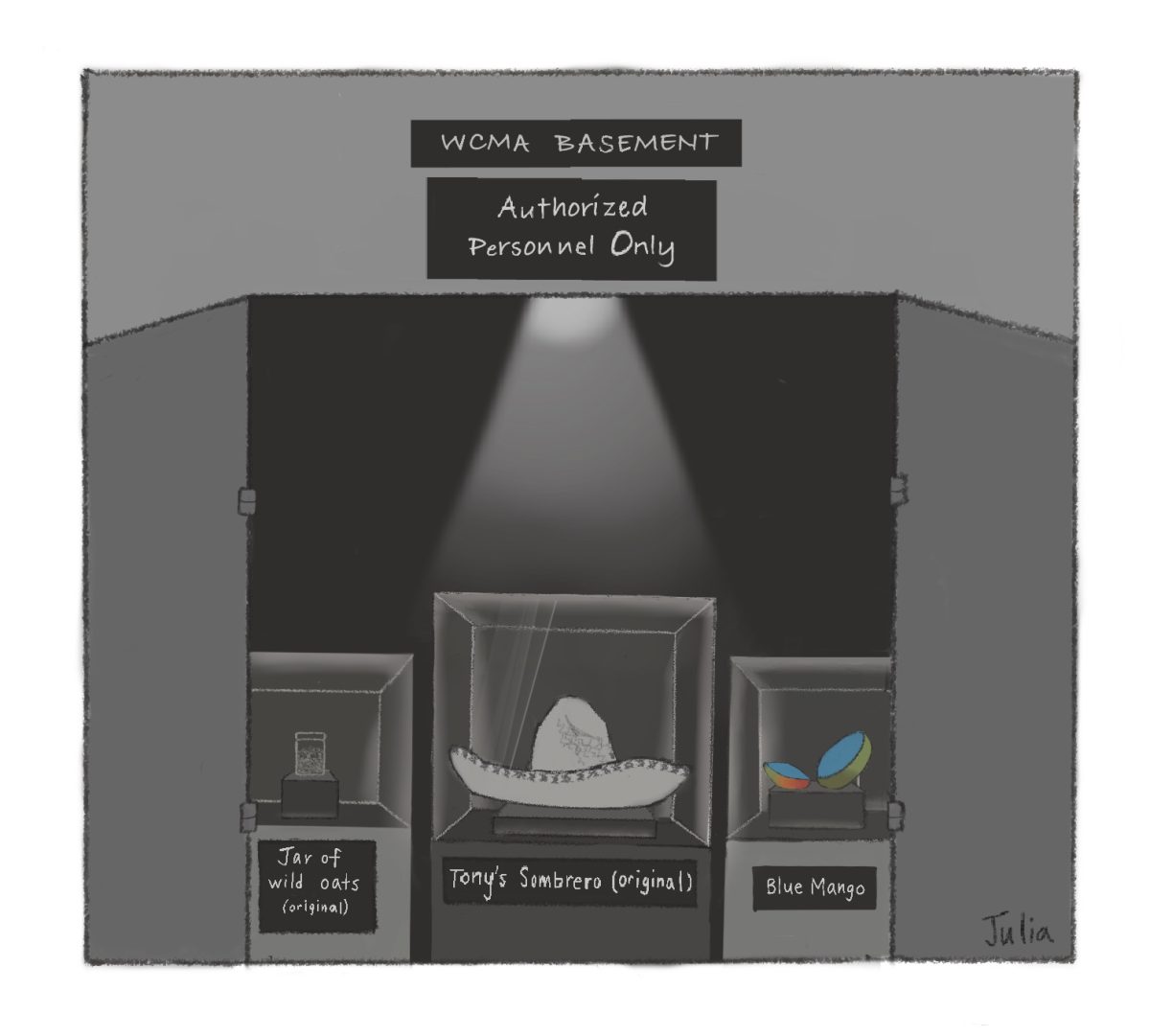Lines, vouchers, and textbooks: The history of the book grant
February 8, 2023

The Williams Bookstore was lively this week as students scoured its shelves for their spring semester books. While some students pay full price for their textbooks, many others receive a book grant from the College that covers the full cost of all necessary course materials.
For 13 years, the College has extended the book grant to all students receiving financial aid. Paul Boyer ’77, who served as director of financial aid when the book grant was first introduced in spring 2010, said that at the time, no other American colleges and universities had a grant program like it. “It was one of the most important policy changes to benefit financial aid students at Williams [in] my almost 20-year tenure,” he wrote in an email to the Record.
“The purpose of the book grant, in short, is to ensure that a student does not have to choose their classes based on the affordability of the materials,” said Ashley Bianchi, the current director of student financial services at the College. The grant covers the entire cost of required books — whether $20, $400, or more — so that students don’t have to select courses out of financial necessity. “This really levels the playing field when it comes to choice in major and the experiential piece of learning at Williams,” she said.
However, the book grant — now a cornerstone of the College’s financial aid program — has only existed for just over a decade.
Prior to 2010, students receiving financial aid could rent books free of charge at the 1914 Memorial Library. Established by members of the Class of 1914 in memory of their classmates who died in World War I, the library opened in September 1920 after raising roughly $1,000 to purchase new textbooks and collecting donations of used books from students, according to a Record article published the week of the library’s opening. In 1948, the library’s book collection had grown to 866 textbooks and was used by an average of 85 students per year, the Record later reported.
But the operation had its limitations. “The library was very low profile, existing in basements and back rooms for many years and managed part-time by a collection of faculty spouses,” Boyer wrote. “Not every book for every student receiving financial aid was available at the modest library.”
As the number of students receiving financial aid grew in the 1980s and 1990s, the College implemented a book voucher system in coordination with Water Street Books — the former bookstore that provided course materials to Williams students until it relocated and became the Williams Bookstore in 2017. Students receiving financial aid could use their vouchers to purchase books from the bookstore, and at the end of the semester, these books would be returned and become part of the 1914 Memorial Library’s collection.
In 2004, however, Ali Moiz ’07 argued for changes to the voucher system and 1914 Memorial Library’s operations in a Record op-ed. The $60 book voucher, he wrote, was both not enough for students with high book costs and also an unnecessarily large amount for those with low book costs, to the point that 20 percent of vouchers went unused. As a result, the library rarely stocked the most expensive textbooks — which were too pricey to be purchased by a voucher — even though some students’ voucher money went unspent every semester.
The 1914 Memorial Library was also infamous for its lines. Before the semester started, the library sent out the list of the books that it had stocked so that students could gauge whether it was worth braving the lines, according to Felicia Pharr ’75, the former coordinator of the 1914 Memorial Library. In a single day before the start of a semester, according to Pharr, the library would loan around 10,000 books.
“Everyone knew that the library was first come, first served,” Pharr said in an interview with the Record. “That’s why those lines became so long. It’s legendary what the students would do to be sure they got the few copies of the books that they needed that were available at the library.”
According to Pharr, students would camp out in frigid temperatures, sleeping overnight in sleeping bags to ensure they could secure the books they needed. “I started doing things like serving hot chocolate and having tents set up so that students wouldn’t be standing out in the rain,” she said.
Pharr was a steadfast advocate for the book grant when it was proposed in 2009 — even though it meant that the 1914 Memorial Library would close and her job would be dissolved. “I always hated that the financial aid students had to stand out in front of the library to get books,” she said. “It wasn’t a level playing field between the financial aid students and the non-financial aid students, and I was always trying to find ways to improve it.”
In addition to eliminating the long lines, the book grant also put an end to the infamous stamps on 1914 Memorial Library books, which some students felt put their economic status on display. The change also allowed financial aid students to annotate their readings — once forbidden to 1914 Memorial Library users — and made it possible for these students to refer back to earlier texts when pursuing higher level courses instead of returning their books to the library.
Since the implementation of the book grant, students need not undergo different book-buying processes based on their aid statuses. “Say you’re in line with friends,” Bianchi said. “[If] two of you are using the book grant and one of you is using your parent’s credit card, there’s not a separate process… You don’t have to go to one line and they go to another… We try to make it as seamless as possible.”
The program’s budget is approximately $1 million each year, according to Bianchi. This comes from the overall budget for the College’s financial aid program as well as the Alumni Fund’s Buy the Book campaign. Using this funding, the program has offered nearly 200,000 books to over 4,000 students over the past 13 years.
In fact, the book grant’s launch proved to be an effective money-saving tool for the College. “Through much research, the adoption of the book grant system was viewed as a cost neutral option,” Boyer wrote. “1914 [Memorial] Library operating costs and new book voucher purchases, [which were] largely funded by library endowments and supplemented by general aid endowment funds, were consolidated to cover the expense of the book grant program.”
Bianchi said that approximately 54 percent of students on campus receive financial aid. The financial aid package includes the book grant for all of these students, but students not receiving aid can acquire it as well if they have demonstrated financial need. “Our philosophy has been, at least in the last five years, to try to never put a burden on a student and assume that they have funds to front any sort of institutional money,” Bianchi said.
“I’ve been away from the College for almost five years now, but I would hope the book grant continues to be an important program of access to financial aid students,” Boyer wrote, adding that he admires the recent strides introduced by the new all-grant financial aid policy. “Williams continues to be at the national forefront of its concern for needy students and managing its need-blind [and] need-based admission and financial aid policies.”
“The book grant is something that the whole campus knows about,” Bianchi said. “It’s so unique to Williams. I think everyone’s really proud of it.”








